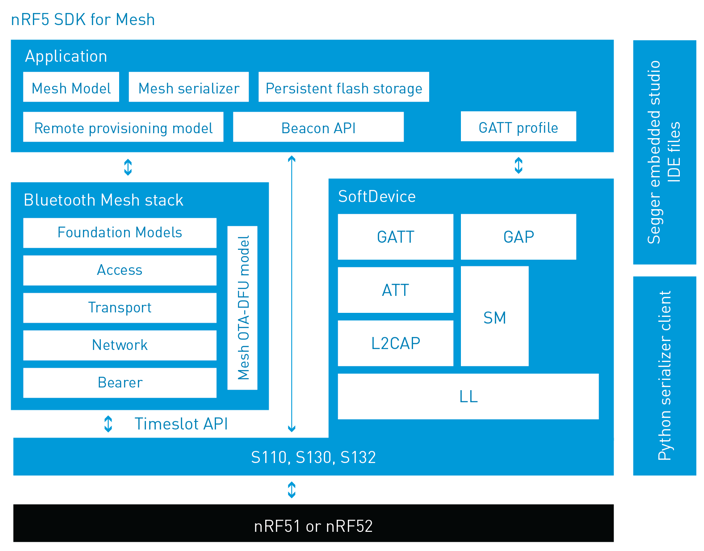The same day we posted about the research paper on Bluetooth Mesh networks, the Bluetooth SIG happened to announce the public availability of their Bluetooth Mesh.
There are lots of marketing articles saying what will be possible and at the other end of the scale, mesh networking specifications that explain how it works. However, to implement these things, we need something in between marketing and specs that works with real hardware.
Today, there’s a new article on the Nordic InfoCenter blog that explains, in simpler terms, how the Bluetooth mesh works and introduces the Nordic SDK.
As we mentioned in our previous article, Bluetooth LE mesh networks tend to leave the application layer to the developer. This is so that mesh network can be used in many scenarios in many vertical industries. However, what’s particularly interesting with the Nordic SDK is that they have implemented some of the application level:

For beacons:
“We have therefore created a Beacon API as part of the Mesh SDK to do concurrent Beaconing and mesh networking”
Taking a look at the part of the SDK for beacons, there’s an API to define the device as a beacon with an advertising payload and advertising interval. The payload is up to the developer. While this falls short of defining APIs for the iBeacon and Eddystone beacon types, it provides a baseline for manufacturers and 3rd party solution providers such as ourselves to create new beacon products and solutions.
![]()